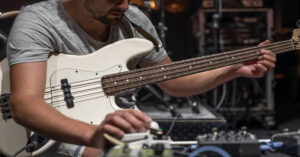The daith piercing is one of the more intricate and visually striking ear piercings, gaining popularity among individuals looking for unique and unconventional body art. Unlike traditional lobe or cartilage piercings, the daith is located in the innermost fold of the ear, directly above the ear canal, which gives it a distinctive appearance. Its placement and design have contributed not only to its aesthetic appeal but also to purported health benefits, such as migraine relief—a claim often discussed but scientifically debated. Understanding the daith piercing requires careful consideration of anatomy, pain thresholds, healing processes, aftercare, and jewelry selection, as well as insight into the cultural and aesthetic significance associated with it. This comprehensive guide covers all these aspects, providing both new enthusiasts and experienced piercers with detailed, actionable information.
1. Anatomy of a Daith Piercing
A daith piercing passes through the crus of the helix, which is the innermost cartilage fold of the ear that surrounds the ear canal. This area is anatomically complex, consisting of dense cartilage, which makes piercing more challenging than simple lobe piercings. The intricate structure of the cartilage necessitates the use of professional piercing tools and sterile techniques to avoid complications.
Understanding the ear’s structure is vital for both safety and aesthetics. The cartilage here is thicker than outer ear regions, meaning that improper technique can lead to deformation, irritation, or prolonged healing. Professional piercers often study the natural curves of the ear before performing the daith piercing to ensure correct alignment and symmetry, especially in cases where bilateral piercings (both ears) are desired. The positioning also determines the type of jewelry that can be safely worn without causing pressure or migration of the piercing.
2. Popularity and Cultural Significance
Daith piercings have risen in popularity for several reasons. Beyond their aesthetic appeal, they are often associated with personal expression, alternative fashion, and body modification culture. Social media and celebrity endorsements have also played a role in making the daith piercing a trendy choice, showcasing unique jewelry and artistic ear designs.
Some proponents believe that daith piercings may help with migraines or anxiety, though this is not universally supported by scientific research. Despite this, the idea of a “functional piercing” has captured the imagination of many individuals who value both style and wellness. In cultural contexts, ear piercings have historically signified social status, beauty, and even rites of passage, and the daith is a modern evolution of this tradition, blending aesthetic and symbolic significance.
3. Procedure: How a Daith Piercing is Done
Performing a daith piercing requires precision, skill, and a sterile environment. Here is a detailed breakdown of the typical procedure:
Step-by-Step Daith Piercing Process
- Consultation: The piercer examines the ear for suitability, checking the thickness of the cartilage and natural folds to determine the optimal angle.
- Preparation: The area is cleaned with an antiseptic solution, and gloves are worn to maintain hygiene.
- Marking: The exact placement of the piercing is marked with a sterile pen. This ensures symmetry and correct positioning.
- Clamping (optional): Some piercers use a specialized clamp to hold the cartilage in place. This can reduce movement during piercing but is not always necessary.
- Piercing: Using a sterile hollow needle (not a piercing gun), the cartilage is pierced at the marked location. Needles are preferred because they create a clean hole and reduce the risk of cartilage damage.
- Jewelry Insertion: Once pierced, the appropriate jewelry, often a curved hoop or ring, is inserted immediately.
- Aftercare Instructions: The piercer provides detailed guidance on cleaning, avoiding irritation, and monitoring for signs of infection.
The choice of jewelry, typically small captive bead rings or seamless hoops, is crucial to avoid discomfort during healing. The size and thickness of the jewelry should match the ear anatomy to prevent migration or irritation.
4. Pain and Sensitivity
A common question among first-timers is: “How painful is a daith piercing?” The answer varies depending on individual pain thresholds, cartilage density, and technique. Generally, pain is described as sharp but brief, followed by a dull ache during the initial healing phase. Compared to lobe piercings, daith piercings are more uncomfortable due to thicker cartilage and deeper placement. However, professional piercers employ techniques to minimize pain, such as using sharp, sterile needles and working efficiently.
After the piercing, soreness, tenderness, and mild swelling are normal. Pain usually subsides within a few days, but residual discomfort can persist for weeks, especially if the jewelry rubs against the ear during sleeping or wearing headphones. Understanding these sensations is important for mental preparation and proper aftercare.
5. Healing Time and Stages
Daith piercings are known for longer healing periods compared to simpler ear piercings. Cartilage piercings can take anywhere from 8 to 16 weeks or even longer, depending on individual healing ability, age, and aftercare practices.
Healing Stages Table
| Stage | Duration | Description |
|---|---|---|
| Initial Healing | 1–2 weeks | Swelling, tenderness, mild redness |
| Formation of Tunnel | 3–6 weeks | Body begins forming a fistula around the jewelry |
| Maturing Phase | 6–12 weeks | Reduced pain and swelling, tissue strengthens |
| Full Healing | 12–16+ weeks | Cartilage fully stabilized, jewelry can be changed |
Patience is essential during healing, and any premature jewelry changes or rough handling can lead to migration, rejection, or prolonged irritation.
6. Aftercare Guidelines
Proper aftercare is critical for preventing infection and ensuring optimal healing. Recommended practices include:
- Cleaning twice daily with a saline solution or a gentle piercing aftercare spray.
- Avoiding touching the piercing with unwashed hands.
- Avoiding sleeping on the pierced ear to reduce pressure.
- Keeping hair, headphones, and other objects away from the piercing.
- Refraining from swimming in pools, hot tubs, or lakes during the early healing phase.
- Monitoring for signs of infection such as excessive redness, pus, or swelling.
Over-cleaning or using harsh solutions can damage the healing tissue, so gentle care is advised. Maintaining a clean and stress-free environment helps the body repair cartilage efficiently.
7. Common Risks and Complications
Although daith piercings are generally safe when performed by a professional, potential risks exist:
| Complication | Cause | Prevention |
|---|---|---|
| Infection | Poor hygiene or contaminated tools | Sterile procedure, regular cleaning |
| Keloids | Excessive tissue growth | Avoid irritation and pressure |
| Migration | Jewelry too tight or trauma | Proper jewelry sizing, minimal touching |
| Cartilage Damage | Improper technique | Professional piercer, needle not gun |
| Allergic Reaction | Metal sensitivity | Use hypoallergenic materials like titanium |
Being aware of these risks allows for proactive care and timely intervention.
8. Jewelry Options for Daith Piercing
Jewelry choice is important both for comfort and aesthetics. Common options include:
- Captive Bead Rings (CBR): Circular rings with a small bead, classic and secure.
- Seamless Hoops: Smooth rings without visible openings, reducing snagging.
- Clickers: Hinged rings that snap open and closed, often more decorative.
Material selection matters: surgical steel, titanium, or gold are preferred for their low reactivity with cartilage tissue. Choosing appropriately sized jewelry prevents unnecessary pressure on the piercing and ensures long-term comfort.
9. Lifestyle Considerations
Daith piercings can affect daily activities. Some considerations:
- Sleeping on the pierced side may be uncomfortable initially.
- Headphones, hats, or earphones may need adjustments to avoid irritation.
- Physical activities, particularly contact sports, require protective measures.
- Hair styling or wearing glasses can rub against the piercing, causing temporary discomfort.
Planning for these lifestyle adjustments reduces complications and ensures a smoother healing process.
10. Daith Piercing and Migraine Relief
A frequently discussed topic is whether daith piercings help relieve migraines or chronic headaches. Some anecdotal evidence suggests that pressure applied to the daith region may stimulate nerves similar to acupuncture points, potentially providing relief. However, scientific studies have not conclusively proven this effect. Individuals seeking migraine management should not rely solely on daith piercings and should consult medical professionals for treatment options. Nevertheless, the piercing’s aesthetic and personal meaning often outweigh potential therapeutic benefits for many enthusiasts.
11. Cost Considerations
The cost of a daith piercing varies depending on location, studio, piercer experience, and jewelry quality. In general:
| Item | Typical Cost Range |
|---|---|
| Piercing Fee | $40–$100 |
| Jewelry | $20–$60 |
| Aftercare Supplies | $10–$25 |
| Total | $70–$185 |
Investing in professional piercing ensures proper technique, sterile tools, and lower risk of complications, making the higher upfront cost worthwhile compared to potential repair or corrective procedures.
12. Choosing a Professional Piercer
Selecting a skilled and certified piercer is essential. Important factors include:
- Experience with cartilage and specialty piercings
- Clean, hygienic studio with sterile tools
- Positive reviews and portfolio of prior work
- Ability to explain procedure, aftercare, and risks clearly
Visiting a reputable studio reduces anxiety and ensures the piercing is performed safely and accurately.
13. Healing Monitoring and Follow-Up
Regularly inspecting the piercing during healing helps detect issues early. Look for:
- Gradual reduction in redness and swelling
- Minimal discharge (clear or light yellow is normal)
- Jewelry sitting comfortably without pressure points
If infection or irritation occurs, consult a professional piercer or healthcare provider immediately. Avoid self-medication with inappropriate ointments or alcohol-based solutions.
14. Summary Table: Key Daith Piercing Facts
| Feature | Description |
|---|---|
| Location | Inner cartilage fold above ear canal |
| Pain Level | Moderate, brief sharp pain followed by dull ache |
| Healing Time | 8–16 weeks or longer |
| Jewelry | Rings, hoops, clickers (titanium, steel, gold) |
| Aftercare | Saline cleaning, avoid touching, monitor for infection |
| Risks | Infection, migration, keloids, cartilage damage |
| Popularity | Alternative fashion, self-expression, aesthetic value |
15. Conclusion
The daith piercing is a sophisticated and visually distinctive ear modification that combines artistry, self-expression, and potential functional significance. With proper planning, professional execution, and diligent aftercare, a daith piercing can be a safe, rewarding addition to body art collections. Understanding anatomy, pain, healing, jewelry selection, and lifestyle adjustments ensures that the piercing not only looks great but also heals properly. Whether chosen for aesthetics, symbolic meaning, or personal belief in health benefits, the daith piercing has become a modern symbol of individuality and creativity. Awareness of the risks, proper technique, and long-term maintenance allows enthusiasts to enjoy their piercing safely and confidently.
Frequently Asked Questions (FAQs)
1. How painful is a daith piercing?
Pain is generally moderate—a brief sharp sensation during piercing, followed by a dull ache during healing.
2. How long does a daith piercing take to heal?
Healing typically lasts 8–16 weeks but may take longer depending on cartilage thickness and aftercare.
3. Can I change the jewelry during healing?
No. Changing jewelry prematurely can cause irritation, infection, or migration. Wait until fully healed.
4. Does daith piercing help with migraines?
Anecdotal evidence exists, but scientific studies have not confirmed migraine relief from daith piercings.
5. What are the main risks of a daith piercing?
Common risks include infection, keloid formation, migration, allergic reaction, and cartilage damage if done improperly.









